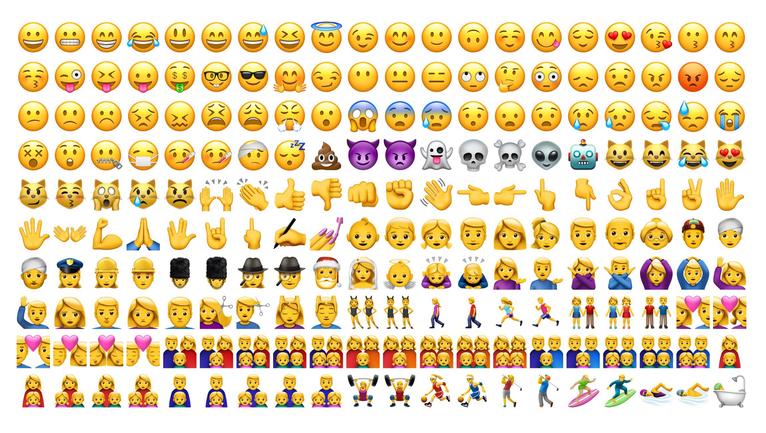We all have our favorite emoji, but our only hope is that yours isn't the eggplant (seriously, don't be that kind of person).
Perusing your most recent message history will be enough to demonstrate the importance of emojis in message exchanges. It also tends to reveal those that you tend to use more; in our case they are the one of the girl with her hand on her face and the one with the eyes (deduce what you want).
Psychology researchers would have you believe that a lot of information can be gleaned from the emojis we use the most. Just do a quick search on Google to check the prevalence of tests of the style "What your emojis say about you". Of which, just so you know, there are 298 million. The results will say that the snake (is there such an icon?) is that you are an egotistical narcissist, that the pizza emoji is often used by the laziest, and that the thumbs up shows that you are emotionally distant.
It cannot be denied that the increase in digital communication has made emojis indispensable when it comes to showing our emotions. But, in general, we tend to keep using them exclusively for talking to friends and family, because they suggest something frivolous and unprofessional. Receiving an email from your boss with the agenda for Friday's strategy meeting, followed by a hugging teddy bear emoji could prompt questions about your mental health. Have they become somewhat unstable or was it just for another recipient?

But considering a recent study, communicating with emojis at work isn't unprofessional, it's exactly what we should be doing.
As The Wall Street Journal reports, emojis can be used to "over-communicate," meaning formality in business communication dies when employees use multiple emojis to communicate with each other. The trend may be new to many companies, but it's not just about the older ones catching up with the younger ones, it actually helps to get better cooperation.
In face-to-face communications, people show empathy and create relationships through Emotional Contagion, which allows emotions and their corresponding behaviors to be triggered between individuals. Researchers have discovered that when a person sees an emoji, the same sections of the brain are activated as if they saw an actual human facial expression. As 'Medium' reports: "Emojis solve the inability to express gestures and emotions by allowing users to communicate through a variety of character images to express their opinions, feelings and personality."
Basically, our brain processes emojis in the same area that it processes faces. And because emojis include the most distinctive features (such as eyes, mouths, and occasionally eyebrows), they are capable of visually expressing human emotion.
The daring photo session of Megan Fox and Kourtney Kardashian that causes controversy: They are accused of plagiarism
The Canary Islands add 2,327 new positives and 15 deaths from COVID-19
Spain stagnates in the fight against corruption: the country has spent a decade maintaining its levels in the Corruption Perception Index, which includes the opinion of managers and experts
The 30 best Capable Women's Briefcase: the best review on Women's Briefcase